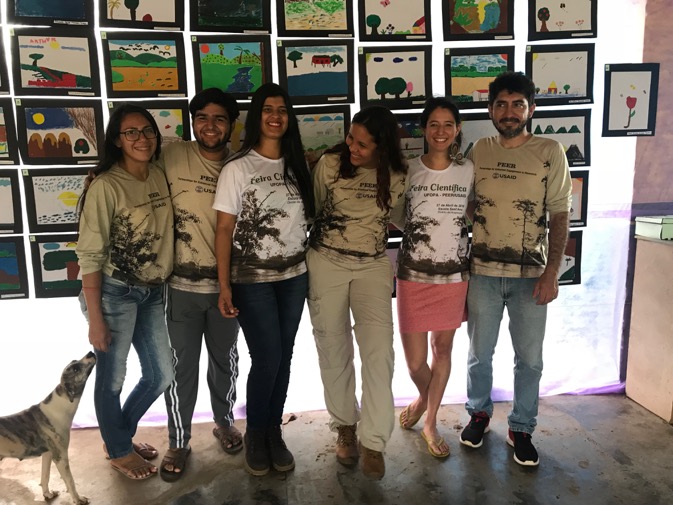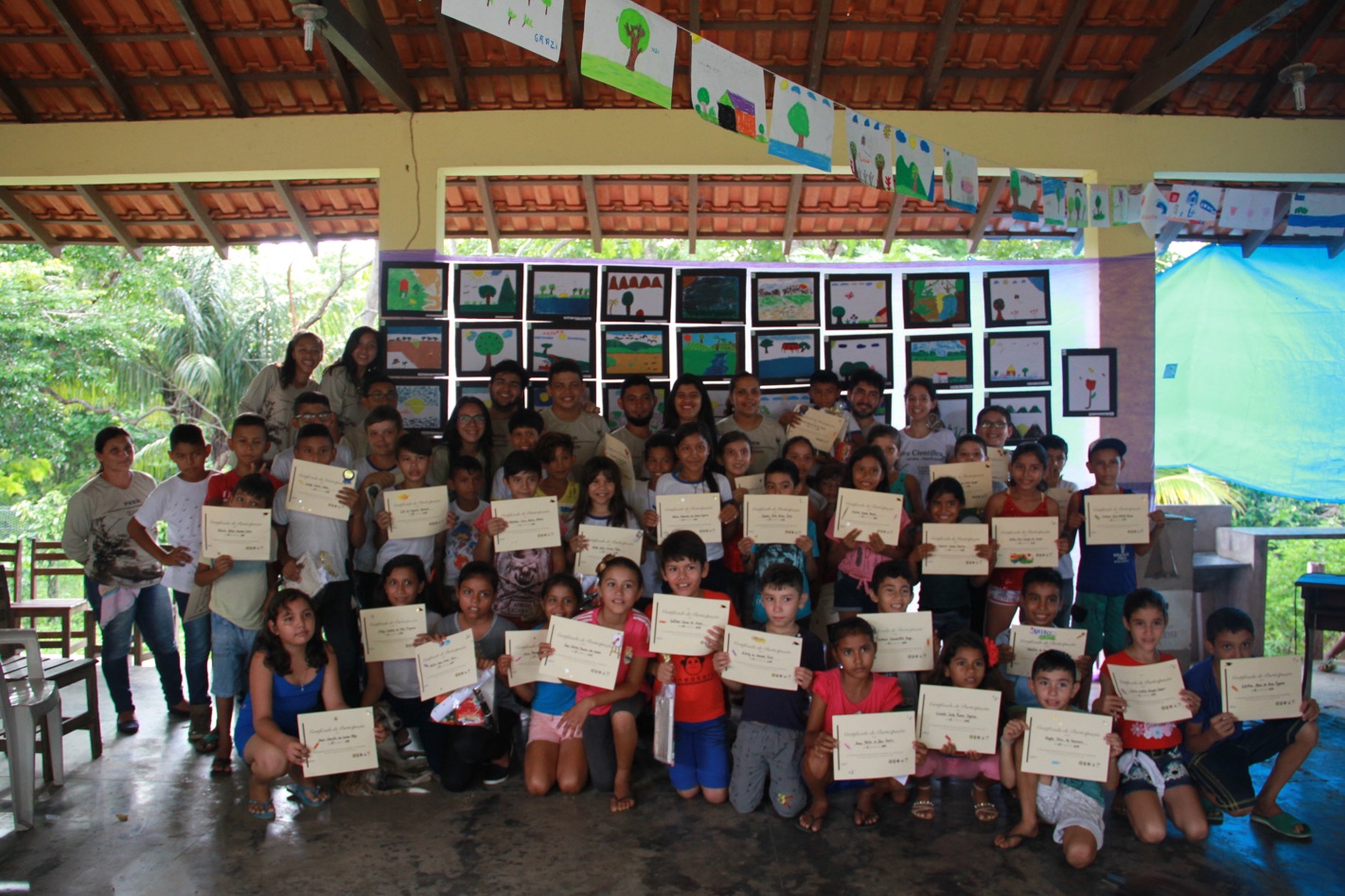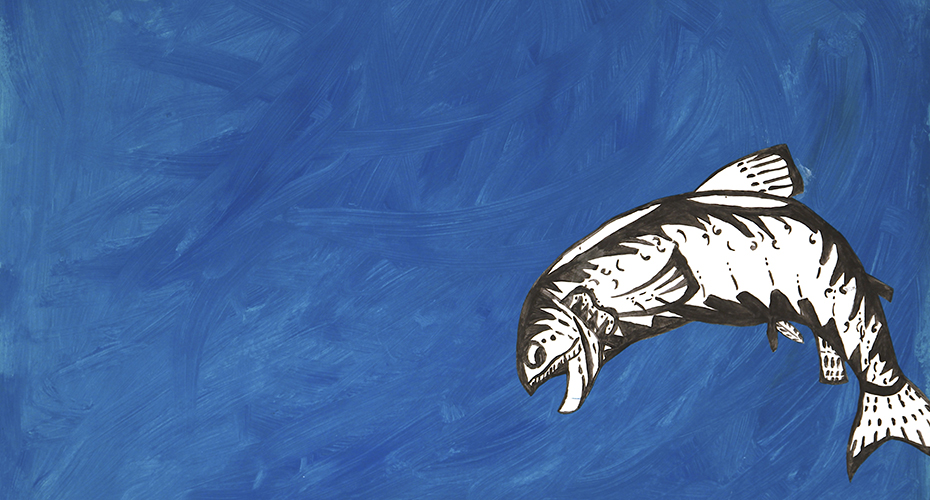As a part of the Global Rivers Observatory, researcher Sarah Rosengard travelled to the Brazilian state of Pará to work with the youth living in Arapixuna near the Amazon river. There, she worked with a team to meld science and visual art, creating 46 masterpieces in colour pencil, pastel and paint. The researchers taught students about the water cycle, river chemistry and várzea biodiversity; the students taught researchers with their experiences growing up within the largest river system in the world. Here, we connect with Sarah to discuss the process that lead to these pieces being created.
Sarah Rosengard's My River, My Home was on display in our Aurizon Atrium in the summer of 2019.
Could you tell us a little about who you are, and your journey that led you to the Global Rivers Observatory project?
I am an oceanographer from Queens, NY. Upon finishing college, I realized I had developed an intense fear of waves that I hoped to cure by living on research ships. After years of wave therapy (including a degree in chemical oceanography), I am now a postdoctoral fellow in Philippe Tortell’s group at University of British Columbia. Here, I apply methods in ocean optics, including satellite remote sensing, to understand a variety of ocean processes, from the carbon cycle to sockeye salmon survival in the Northeast Pacific Ocean. More recently, I have partnered with the Arctic Eider Society, an Inuit-based non-profit organization, on the SIKU.org platform. By getting remote sensing products like sea ice imagery into the hands of users, this knowledge sharing platform builds capacity for Inuit communities to come up with their own solutions to rapid climate change. I am very passionate about equity and diversity in solutions to ocean change and sustainability, and the role of innovative education (e.g., science with art!) in making the earth sciences more inclusive for everyone.
Before I came to Vancouver, I did a lot of my PhD field work in the Amazon River Basin with the Global Rivers Observatory, which endeavors to monitor and understand the chemical “pulse” of rivers worldwide, from small to large, clear to turbid, and relatively pristine to heavily dammed. For years, different scientists in this observatory worked with local communities to take measurements of rivers in different times of year. Their connection with local scientists eventually involved into partnerships with local school students, and a global art exhibit celebrating youth’s perspectives of the same rivers that these scientists study.
In Brazil, I was studying how much carbon the Amazon River moves from land to sea. Such quantities are important for us to understand how much the largest river in the world might impact the amount of carbon that gets stored, and out of the atmosphere where it can become a climate warming greenhouse gas. I could not calculated the river’s carbon flux without the help of the amazing scientific community that exists in Santarem, Para, who know the Amazon River network like I know the NYC subway system. My partnership with the Brazilian scientist was more than just a science project - it was an experience in a different language, eating different foods, sensing different smells and weather. After feeling such a personal connection to the area through my partnerships and experiences working there, I was very keen to expand the Global Rivers Observatory art exhibit to include perspectives of youth from the Amazon River Basin.

How did the team of researchers work with the youth in Arapixuna? What was the process you took that resulted in these artworks?
My Brazilian colleagues already had a connection with Arapixuna through another grant— they regularly visited the community to take measurements of the rain forest and water around it. In fact, one of my colleagues (Michela) is from there and still had family there. Then in fall 2017, we won a modest grant that would cover the cost of an art project with the school in Arapixuna. It would have impossible to do this project without the connections to Arapixuna that Michela and my Brazilian colleagues provided.
What were you most curious about heading into the project? What was the most surprising thing you learned?
I was most curious to see the artwork! I was very, very excited to see what the students would create. I was surprised to learn that colour played such an important role in the students’ relationship to water. We are used to water being blue around us, and as you will see in the Amazon artworks, water is brown.
It seems unusual to incorporate art into the scientific process itself – how do things like art and community engagement fit in to the scientific process?
Art helps scientists engage with communities. Art itself can be a means to communicating science. In addition, there are many similarities between the scientific and artistic processes (e.g., the desire to organize information, to gain understanding of the world around us, and to communicate our findings), and scientists can use that similarity to advance the learning process for others. Finally, I think that through the process of engagement, scientists can learn too and become better citizens. For example, this partnership with Arapixuna allowed me to better understand the river that I research, and learn from the perspectives that students shared through their artworks. As I continue my career, I hope to see more examples of healthy community-research partnerships. I hope that community engagement becomes a greater part of the scientific research process. Just as scientists have an obligation to share their findings to communities, they have as much to learn from communities too.

Coming back to Vancouver after the project, were there any similarities or differences you saw in how people relate to the land?
Like the students in Arapixuna, we refer to natural landmarks (where the ocean is, where the mountains are) to get a sense for direction in Vancouver. One interesting difference, though, is that I did not hear the students use the words “north/south/east/west” at all. To me, it seemed as though their sense of place was entirely built upon the landmarks around them, whereas we use a combination of both (or just google maps) to get a sense of our surroundings in a big city like Vancouver.
What's art got to do with science?
At Science World, we believe that science parallels art as a subject matter and a source of inspiration. Take a moment to experience the featured works by local artists, including Sarah Rosengard , who use their brushes, pencils, cameras, and code to tell stories about science and nature.
